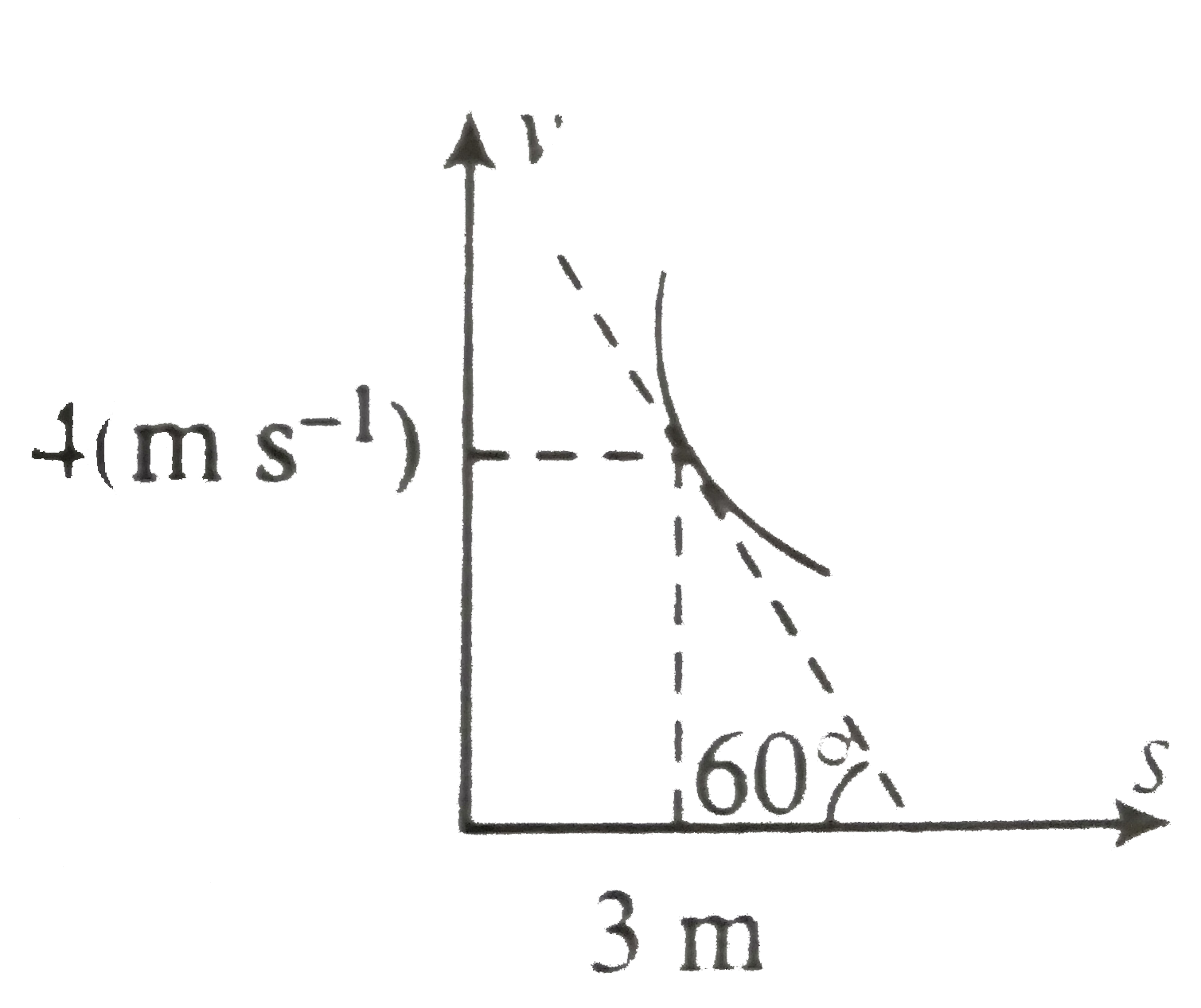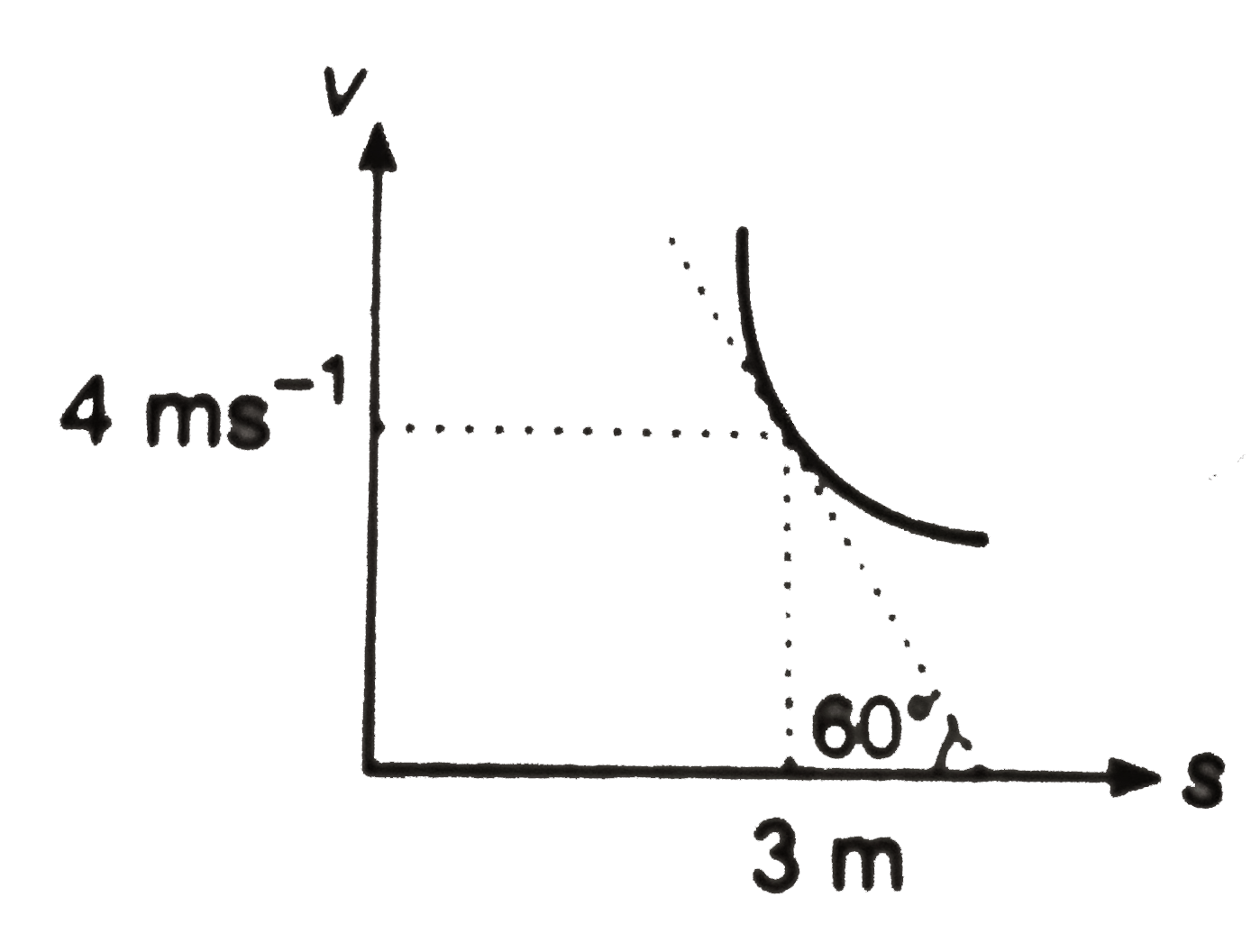An object moves 1.00 m in a straight -line displacement →a, changes direction, moves another 1.00 m in straight-line displacement→b, and then ends up 1.0m from the starting point. (a) Through what angle did it turn ? (b) What is the magnitude of →a+→b ?
(a)120∘,(b)1.73m
Topper's Solved these Questions
- BOOK - RESNICK AND HALLIDAYCHAPTER - VECTORS EXERCISE - PRACTICE QUESTIONS39videos
VECTORS
- BOOK - RESNICK AND HALLIDAYCHAPTER - VECTORS EXERCISE - CHECKPOINT5videos
VECTORS
- BOOK - RESNICK AND HALLIDAYCHAPTER - UNITS AND MEASUREMENT EXERCISE - PRACTICE QUESTIONS (MATRIX-MATCH)11videos
UNITS AND MEASUREMENT
- BOOK - RESNICK AND HALLIDAYCHAPTER - WAVE - IIEXERCISE - PRACTICE QUESTIONS (INTEGER TYPE)5videos
WAVE - II
Similar Questions
Knowledge Check
- Question 1 - Select One
A particle is moving along a straight line whose velocity - displacement graph is shown in figure. What is the acceleration when displacement is 3 m?
 A−4√3ms−2B3√3ms−2C√3ms−2D4/√3ms−2
A−4√3ms−2B3√3ms−2C√3ms−2D4/√3ms−2 - Question 2 - Select One
The fig. shows the displacement time graph of a particle moving on a straight line path. What is the magnitude of average velocity of the particle over 10 seconds?
 A2ms−1B4ms−1C6ms−1D8ms−1
A2ms−1B4ms−1C6ms−1D8ms−1 - Question 3 - Select One
A cyclist moves in such a way that he takes 72° turn towards left after travelling 200 m in straight line. What is the displacement when he takes just takes fourth turn?
AZeroB600mC400 mD200 m
A point moves in a straight line so that its displacement x metre at a time t second is such that t=(x^2 −1) ^1/2 . Its acceleration in m/s^2 at time t second is:
View SolutionA particle moves in a straight line with a constant acceleration.It changes its velocity from 10m/s to 20m/s while covering a distance of 135m in t second.What is the value of t?
View SolutionA partial along a straight line whose velocity-displacement graph is as shown in the figure. What is the magnitude of acceleration when displacement is 3 m ?
 View Solution
View SolutionA particle moves in a straight line with a constant acceleration. It changes its velocity from 10ms−1 to 20ms−1 while passing through a distance 135m in t seconds. The value of t is.
View SolutionA jogger travels a route that has two parts. The first is a displacement →A of 2.50km due south, and the second involves a displacement →B that points due east, Suppose that →A−→B had a magnitude of 3.75km. What then would be the magnitude of →B, and what is the direction of →A−→B relative to due south ?
View Solution

